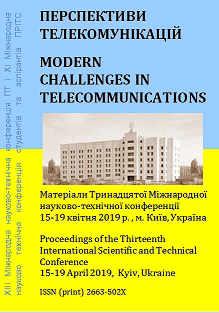ГІБРИДНА СИСТЕМА ОРІЄНТАЦІЇ ТЕЛЕКОМУНІКАЦІЙНИХ НАНОСУПУТНИКІВ
Ключові слова:
наносупутник, система орієнтації та стабілізаціїАнотація
Valery Yavisya
Hybrid system of telecommunication nanosuputniki orientation
An analysis of the ways of orientation and stabilization of nanosatellites is carried out. Known methods are evaluated for the possibility of their practical implementation with restrictions on weight, dimensions, energy consumption. The hybrid method of orientation and stabilization is proposed, which allows to change the orbit of such spacecraft.
Посилання
Левантовский В. И. Механика космического полета в элементарном изложении. – М.: Наука, 1980. 512 с.
Явися В.С., Лысенко А.И. Анализ методов ориентации и стабилизации наноспутника // Науковий вісник Академії Муніципального Управління, Збірник наук. праць АМУ. Серія «Техніка». – Вип.1-2(11)–2016. – К.: АМУ, 2016. – С. 262–270.
##submission.downloads##
Як цитувати
Явіся, В. С. (2019). ГІБРИДНА СИСТЕМА ОРІЄНТАЦІЇ ТЕЛЕКОМУНІКАЦІЙНИХ НАНОСУПУТНИКІВ. Збірник матеріалів Міжнародної науково-технічної конференції «ПЕРСПЕКТИВИ ТЕЛЕКОМУНІКАЦІЙ». вилучено із https://conferenc-journal.its.kpi.ua/article/view/168509
Номер
Розділ
Сенсорні мережі та прикладні аспекти застосування телекомунікаційних технологій
Ліцензія
Авторське право (c) 2019 Явіся Валерій Сергійович

Ця робота ліцензується відповідно до Creative Commons Attribution 4.0 International License.
Authors who submit to this conference agree to the following terms:a) Authors retain copyright over their work, while allowing the conference to place this unpublished work under a Creative Commons Attribution License, which allows others to freely access, use, and share the work, with an acknowledgement of the work's authorship and its initial presentation at this conference.
b) Authors are able to waive the terms of the CC license and enter into separate, additional contractual arrangements for the non-exclusive distribution and subsequent publication of this work (e.g., publish a revised version in a journal, post it to an institutional repository or publish it in a book), with an acknowledgement of its initial presentation at this conference.
c) In addition, authors are encouraged to post and share their work online (e.g., in institutional repositories or on their website) at any point before and after the conference.

